i have a requirement where i need to replace a frame with another frame. I have implemented below code which is working fine but issue is that i am doing in same file. Is it possible if i create frame1 in one .py file and frame2 in another .py file and still achieve same result.
The below way of solution will not help as it will create huge code in single file.
from PyQt5 import QtCore, QtGui, QtWidgets
class Ui_MainWindow(object):
def setupUi(self, MainWindow):
MainWindow.setObjectName("MainWindow")
MainWindow.resize(434, 362)
self.centralwidget = QtWidgets.QWidget(MainWindow)
self.centralwidget.setObjectName("centralwidget")
self.frame = QtWidgets.QFrame(self.centralwidget)
self.frame.setGeometry(QtCore.QRect(10, 10, 411, 311))
self.frame.setFrameShape(QtWidgets.QFrame.Box)
self.frame.setFrameShadow(QtWidgets.QFrame.Raised)
self.frame.setObjectName("frame")
self.frame_2 = QtWidgets.QFrame(self.centralwidget)
self.frame_2.setGeometry(QtCore.QRect(10, 10, 411, 311))
self.frame_2.setFrameShape(QtWidgets.QFrame.Box)
self.frame_2.setFrameShadow(QtWidgets.QFrame.Raised)
self.frame_2.setObjectName("frame_2")
self.label = QtWidgets.QLabel(self.frame_2)
self.label.setGeometry(QtCore.QRect(10, 10, 131, 16))
self.label.setObjectName("label")
self.label_2 = QtWidgets.QLabel(self.frame)
self.label_2.setGeometry(QtCore.QRect(10, 20, 131, 16))
self.label_2.setObjectName("label_2")
self.pushButton = QtWidgets.QPushButton(self.centralwidget)
self.pushButton.setGeometry(QtCore.QRect(10, 330, 411, 23))
self.pushButton.setObjectName("pushButton")
self.pushButton.clicked.connect(self.changeFrame)
MainWindow.setCentralWidget(self.centralwidget)
self.frame.show()
self.frame_2.hide()
self.retranslateUi(MainWindow)
QtCore.QMetaObject.connectSlotsByName(MainWindow)
def retranslateUi(self, MainWindow):
_translate = QtCore.QCoreApplication.translate
MainWindow.setWindowTitle(_translate("MainWindow", "MainWindow"))
self.label.setText(_translate("MainWindow", "Second Frame"))
self.label_2.setText(_translate("MainWindow", "First Frame"))
self.pushButton.setText(_translate("MainWindow", "Frame Change"))
def changeFrame(self):
self.frame.hide()
self.frame_2.show()
if __name__ == "__main__":
import sys
app = QtWidgets.QApplication(sys.argv)
MainWindow = QtWidgets.QMainWindow()
ui = Ui_MainWindow()
ui.setupUi(MainWindow)
MainWindow.show()
sys.exit(app.exec_())
Frame1.Py
from PyQt5 import QtCore, QtGui, QtWidgets
class Frame1(object):
def setupUi(self, MainWindow):
MainWindow.setObjectName("MainWindow")
MainWindow.resize(434, 362)
MainWindow.setWindowTitle("MainWindow")
self.centralwidget = QtWidgets.QWidget(MainWindow)
self.centralwidget.setObjectName("centralwidget")
self.frame = QtWidgets.QFrame(self.centralwidget)
self.frame.setGeometry(QtCore.QRect(10, 10, 411, 311))
self.frame.setFrameShape(QtWidgets.QFrame.Box)
self.frame.setFrameShadow(QtWidgets.QFrame.Raised)
self.frame.setObjectName("frame")
self.label = QtWidgets.QLabel(self.frame_2)
self.label.setGeometry(QtCore.QRect(10, 10, 131, 16))
self.label.setObjectName("label")
self.pushButton.setText("Frame One")
MainWindow.setCentralWidget(self.centralwidget)
QtCore.QMetaObject.connectSlotsByName(MainWindow)
Frame2.py
from PyQt5 import QtCore, QtGui, QtWidgets
class Frame2(object):
def setupUi(self, MainWindow):
MainWindow.setObjectName("MainWindow")
MainWindow.resize(434, 362)
MainWindow.setWindowTitle("MainWindow")
self.centralwidget = QtWidgets.QWidget(MainWindow)
self.centralwidget.setObjectName("centralwidget")
self.frame = QtWidgets.QFrame(self.centralwidget)
self.frame.setGeometry(QtCore.QRect(10, 10, 411, 311))
self.frame.setFrameShape(QtWidgets.QFrame.Box)
self.frame.setFrameShadow(QtWidgets.QFrame.Raised)
self.frame.setObjectName("frame")
self.label = QtWidgets.QLabel(self.frame_2)
self.label.setGeometry(QtCore.QRect(10, 10, 131, 16))
self.label.setObjectName("label")
self.label.setText("Second Frame")
MainWindow.setCentralWidget(self.centralwidget)
QtCore.QMetaObject.connectSlotsByName(MainWindow)
Main.py
from PyQt5 import QtCore, QtGui, QtWidgets
from Frame1 import *
from Frame2 import *
class Main(object):
def setupUi(self, MainWindow):
MainWindow.setObjectName("MainWindow")
MainWindow.resize(434, 362)
self.centralwidget = QtWidgets.QWidget(MainWindow)
self.centralwidget.setObjectName("centralwidget")
Frame1.frame.show()
Frame2.frame.hide()
self.pushButton = QtWidgets.QPushButton(self.centralwidget)
self.pushButton.setGeometry(QtCore.QRect(10, 330, 411, 23))
self.pushButton.setObjectName("pushButton")
self.pushButton.clicked.connect(self.changeFrame)
MainWindow.setCentralWidget(self.centralwidget)
QtCore.QMetaObject.connectSlotsByName(MainWindow)
def changeFrame(self):
Frame1.frame.hide()
Frame2.frame.show()
if __name__ == "__main__":
import sys
app = QtWidgets.QApplication(sys.argv)
MainWindow = QtWidgets.QMainWindow()
ui = Main()
ui.setupUi(MainWindow)
MainWindow.show()
sys.exit(app.exec_())
